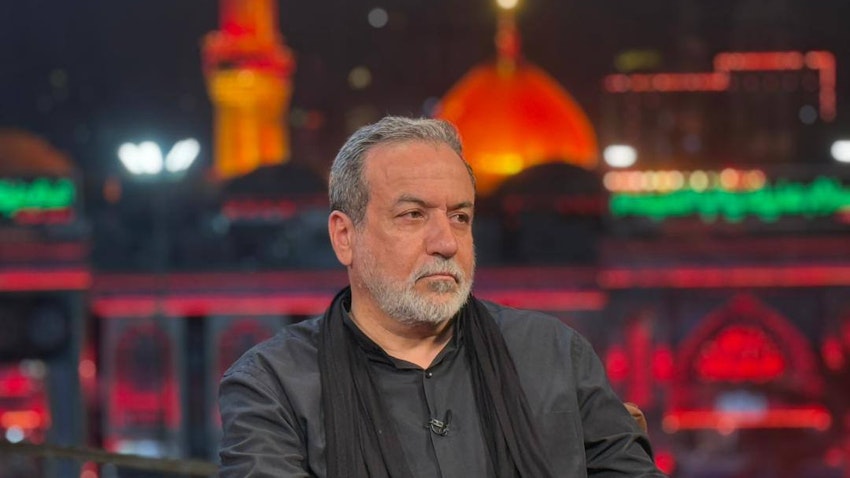Cold agglutinin disease (CAD) secondary to Mycoplasma pneumoniae (M. pneumoniae) infection in adults is linked to severe illness, including a high risk of complications related to blood clots and intensive care admissions, according to a national study in France.
Still, data showed that most patients recover within weeks with antibiotics and supportive care, while no clear benefit is seen with glucocorticoids — anti-inflammatory and immunosuppressive medications commonly used to manage autoimmune conditions such as CAD.
“GC [glucocorticoid] use can probably be avoided in most patients, although the benefit/risk balance has to be carefully evaluated in the most severe cases,” researchers wrote.
The study, “Cold Agglutinin Syndrome Secondary to Mycoplasma pneumoniae Infection in Adults: Results From a Large French Observational Study (MyCOLD Study),” was published in the American Journal of Hematology.
CAD classified as secondary when triggered by an underlying condition
CAD is an autoimmune disease in which self-reactive antibodies, known as cold agglutinins, wrongly bind to red blood cells at low temperatures, causing them to clump together and marking them for destruction, or hemolysis.
This can lead to the formation of blood clots that can block vessels and reduce the number of circulating red blood cells, leading to anemia, impaired oxygen delivery throughout the body, fatigue, and other CAD symptoms.
CAD is classified as primary when it occurs for an unknown reason, and secondary — this is also known as cold agglutinin syndrome or CAS — when triggered by an underlying condition, such as certain cancers or infections.
The M. pneumoniae bacterium is mostly known for causing mild respiratory infections, but it is increasingly recognized for its ability to provoke serious complications beyond the lungs, among them, CAS.
While cold agglutinins are commonly seen during M. pneumoniae infections, clinically significant CAS “in this setting is rare and its optimal management is not consensual,” the researchers wrote.
Nearly all participants received antibiotics to treat M. pneumoniae infection
To learn more, a team of researchers in France launched MyCOLD, a national, multicenter observational study aimed at investigating CAD secondary to M. pneumoniae infection in adults. The goal was to describe the clinical features, identify risk factors, and assess whether treatments like glucocorticoids improve outcomes.
A total of 60 adults with M. pneumoniae-related CAS seen at 38 hospitals across France were included in the study. All had been hospitalized for M. pneumoniae infection between September 2023 and September 2024.
Slightly more than half were female, and the median age at CAS diagnosis was 48.5 years. Participants were diagnosed with CAS at a median of 10 days after the first infection symptoms.
Nearly all adults (96.7%) had respiratory symptoms, including shortness of breath, and 71.7% had fever. Nearly 35% had dark-colored urine, a common sign of hemolysis.
Participants’ median level of hemoglobin, the oxygen-carrying protein in red blood cells, indicated moderate to severe anemia, and cold agglutinins were detected in all 29 tested adults.
Nearly half (45%) of thes patients were admitted to intensive care, and 16.7% experienced blood vessel blockage due to blood clots, mostly in the first 72 hours after admission.
All but one adult (98.3%) received antibiotics to treat the underlying M. pneumoniae infection. Nearly 72% received blood transfusions, often using warmed blood products to prevent further hemolysis, and 41.7% received at least one treatment for CAD, most commonly glucocorticoids (28.3%).
After a median follow-up of 56 days, or nearly two months, 90% of adults had recovered from CAS. The remaining participants were either lost to follow-up or had other blood disorders.
Patients receiving glucocorticoids did not recover faster
Despite having more severe CAS at diagnosis, including lower hemoglobin levels and higher hemolysis markers, adults who received glucocorticoids did not recover faster or at a higher rate than those who did not.
“Patients recovered within weeks, irrespective of the treatments received, suggesting that cold agglutinins disappear [quickly] and that the long-term prognosis of CAS following MP [M. pneumoniae] infection is good,” the researchers wrote. “While it is difficult to firmly conclude on the usefulness of GC for [M. pneumoniae-related CAS], our data suggest that most patients recover only with supportive care and that a prolonged GC course is probably not useful.”
The team then compared data from the 60 adults with M. pneumoniae-related CAS to that of 1,267 people from the national MYCADO study who were hospitalized with the same infection, but did not develop CAS.
Overall, the prognosis of CAD is good, and glucocorticoids do not appear to influence outcomes.
They found no demographic or clinical features significantly associated with the risk of CAS. However, CAS patients were significantly more likely to show anemia-related symptoms and to develop pulmonary embolism, or blood clots blocking lung arteries. They were also significantly more likely to be admitted to intensive care (45% vs. 31%).
“Overall, based on these data, the main messages for the clinician are that [shortness of breath] worsening and/or the occurrence of anemia in the context of a [lung infection] should prompt measuring markers of hemolysis … and a search for cold agglutinin, especially if MP infection is confirmed,” the researchers wrote.
In addition to specific antibiotics, adults with M. pneumoniae-related CAS should receive supportive care, including preventive treatment for blood clots and warmed blood transfusions in cases of severe anemia, the team noted.
“Overall, the prognosis of CAD is good, and glucocorticoids do not appear to influence outcomes,” the researchers wrote.




![Diesel Prices to Drop by Rs. 11.50, Petrol Price Set to Increase [Updated]](https://afnnews.qaasid.com/wp-content/uploads/2025/08/petrol-.jpg)




